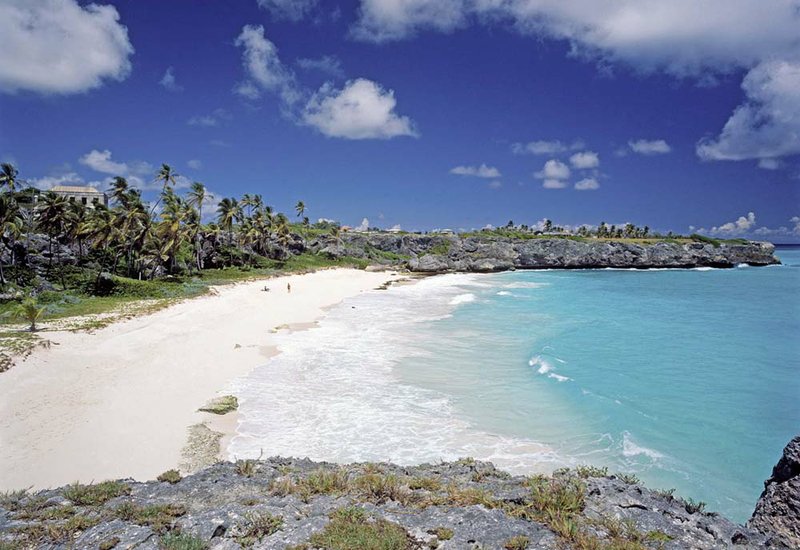ST. PHILIP, Barbados — George Washington slept here.
Among the hundreds of markers that make that claim, the most curious is here on Barbados, the easternmost Caribbean island, off the coast of Venezuela, which Washington visited in 1751.
He apparently enjoyed his stay, despite a bout of smallpox, writing in his diary, “In the cool of the evening we rode in the country and were perfectly enraptured with the beautiful scenery which every side presented our view. The fields of cane, corn, fruit trees in a delightful green.”
It took Washington, who was then 19, six weeks to sail from Virginia with his half brother Lawrence, who had tuberculosis.Lawrence hoped the tropical air would be restorative.
It took me and my wife, a somewhat older couple, five hours on a direct flight from New York for our first visit here. And unlike George and Lawrence, who came for recuperation, we - along with friendsfrom London - came for the sun and rum.
The future first president of the United States rode around the island on a horse; we rented a car. A tourist guide booklet noted that H-number licenseplates identify visiting drivers and “locals are usually accommodating of your confusion and make allowances.” The island is 166 square miles (430 square kilometers), about 2 1/2 times the size of Washington, D.C., and about as difficult to get around by car, with driving on the left (Barbados was a British possession until independence in 1966) and numerous traffic circles or rotaries to negotiate.
It is a relatively flat island, with green hills rising gently inland and stunning vistas on the coasts, the Caribbean in the west, the Atlantic in the east.
The scenic beauty of the island was the inspiration for the Alec Waugh novel, Island in the Sun, which was made into a movie starring Joan Fontaine and Harry Belafonte in 1957 and partly filmed here.
Frequent sights while driving around the island were “rum shops,” combination bars and general stores that often serve as gathering places for local Bajans, as the Barbadians are called. It is said that there are as many rum shops as there are churches in Barbados, and there are a lot ofchurches. The rum shops are the best places to sample local food and drink, watch a game of dominos, or just get to know the friendly and hospitable Bajans.
Cricket fields abound, as do chattel houses, especially on the lesser roadways. The chattel houses are small wooden homes set on blocks rather than on more permanent foundations. “Chattel” means movable property. Historically, in plantation days, the workers did not own the land their house was set on, so they built them to be able to move the whole house quickly in case of a landlord or employer dispute.
A few now serve as stores, selling T-shirts, beachwear and gifts in Chattel Village in the inappropriately named Holetown on the west coast. Apparently, Holetown got its name because of the offloading of ships in the smallchannel nearby. It’s where the English first landed in Barbados in 1625.
We lunched there, at a beachside restaurant aptly named Beach House, dining on fish or chicken, and rum, the island drink, usually served with fruit juice as a rum punch.
On one rainy day, we headed for Bridgetown, the island’s capital on the southwest coast and stopped at the Waterfront Cafe for a lunch of flying fish, the national fish of the island. (They don’t really “fly,” but they do make an Olympian leap out of the warm Caribbean waters to escape predators.)
Not far from Bridgetown are the George Washington House, restored as a heritage site, and the Mount Gay rum visitors center on the northern edge of the capital; the working distillery is in another part of the island. The rum is made from local sugar cane, still the island’s biggest product for export and local consumption, although tourism and manufacturing have surpassed the sugar industry in economic importance.
On the rugged and less populated east coast of the island is the strikingly beautiful fishing village of Bathsheba, with white sand beaches stretchingacross a coastline of erosionshaped rock formations. A lunch at the Round House here provided a wonderful view of the ocean, where surfers were out. Bathsheba is a popular spot for surfers as well as for Bajans who frequently weekend here in seaside cottages along the shore.
We ventured into the town of Oistins for its famous Friday night fish fry along the shore. Choices included kingfish, swordfish, dorado (called dolphin fish here) or flying fish, with cou-cou (made of corn meal and okra) or macaroni pie. Dinner per person was about 16 Barbadian dollars ($8 American) at the two-to-one exchange rate.
Of course, this is a tropical Caribbean island, so sightseeing generally took a back seat to its more alluring features - sun, surf and sand, all in abundance - and accompanying sailing, fishing, surfing and swimming.
No wonder Washington slept here.
For more information, check out visitbarbados.org.
Travel, Pages 60 on 11/28/2010
